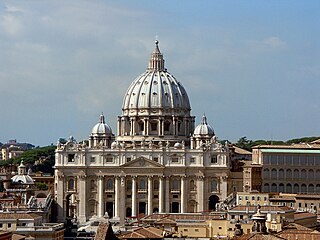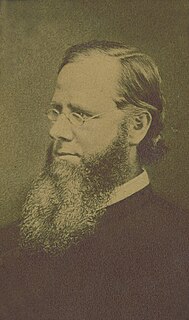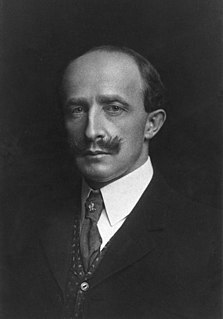Related Research Articles
Canon law is a set of ordinances and regulations made by ecclesiastical authority, for the government of a Christian organization or church and its members. It is the internal ecclesiastical law, or operational policy, governing the Catholic Church, the Eastern Orthodox and Oriental Orthodox churches, and the individual national churches within the Anglican Communion. The way that such church law is legislated, interpreted and at times adjudicated varies widely among these three bodies of churches. In all three traditions, a canon was originally a rule adopted by a church council; these canons formed the foundation of canon law.

The Second Ecumenical Council of the Vatican, commonly known as the Second Vatican Council or Vatican II, addressed relations between the Catholic Church and the modern world. The council, through the Holy See, was formally opened under the pontificate of Pope John XXIII on 11 October 1962 and was closed under Pope Paul VI on the Solemnity of the Immaculate Conception on 8 December 1965.

The Catholic Church in the United States is composed of ecclesiastical communities in full communion with the Holy See.
Thomas Gerard Weinandy, OFM Cap, is an American Roman Catholic priest and a leading scholar. He is a prolific writer in both academic and popular works, including articles, books, and study courses.

The United States Conference of Catholic Bishops (USCCB) is the episcopal conference of the Catholic Church in the United States. Founded in 1966 as the joint National Conference of Catholic Bishops (NCCB) and United States Catholic Conference (USCC), it is composed of all active and retired members of the Catholic hierarchy in the United States and the Territory of the U.S. Virgin Islands. In the Commonwealth of Puerto Rico, the bishops in the six dioceses form their own episcopal conference, the Puerto Rican Episcopal Conference. The bishops in U.S. insular areas in the Pacific Ocean – the Commonwealth of the Northern Mariana Islands, the Territory of American Samoa, and the Territory of Guam – are members of the Episcopal Conference of the Pacific.

Avery Robert Dulles was a Jesuit priest, theologian and cardinal of the Catholic Church. Dulles served on the faculty of Woodstock College from 1960 to 1974, of the Catholic University of America from 1974 to 1988, and as the Laurence J. McGinley Professor of Religion and Society at Fordham University from 1988 to 2008. He was an internationally-known author and lecturer.
Americanism was a group of related views perceived by some to be held by some American Catholics; and denounced as heresies by the Holy See. European "continental conservative" clerics thought they detected signs of modernism or classical liberalism of the sort the Pope had condemned in the Syllabus of Errors in 1864. They feared that these doctrines were held by and taught in the 1890s by many members of the American Catholic hierarchy, who denied that they held these views.

Isaac Thomas Hecker was an American Roman Catholic Priest and founder of the Paulist Fathers, a North American religious society of men; he is named a Servant of God by the Catholic Church.

James Gibbons was an American prelate of the Catholic Church. He served as Apostolic Vicar of North Carolina from 1868 to 1872, Bishop of Richmond from 1872 to 1877, and as ninth Archbishop of Baltimore from 1877 until his death in 1921. Gibbons was elevated to the rank of cardinal in 1886.

William Laurel Harris was an American muralist, educator, editor and arts organizer.
An apostolic constitution is the most solemn form of legislation issued by the Pope. The use of the term constitution comes from Latin constitutio, which referred to any important law issued by the Roman emperor, and is retained in church documents because of the inheritance that the canon law of the Roman Catholic Church received from Roman law.

The Missionary Society of Saint Paul the Apostle, better known as the Paulist Fathers, is a Roman Catholic society of apostolic life for men founded in New York City in 1858 by Servant of God Isaac Thomas Hecker in collaboration with George Deshon, Augustine Hewit, and Francis A. Baker. Members of the society are called Paulists, and identify themselves as such by the use of the initials C.S.P. after their names, for the Congregation of St. Paul. The Society's mission is to evangelize—preach the gospel or give information with the intention of converting people to Catholicism—the people of North America in a manner suited to the continent's culture.
Richard Peter McBrien was a Catholic priest and the Crowley-O'Brien Professor of Theology at the University of Notre Dame in South Bend, Indiana, United States. He authored twenty-five books, including the very popular Catholicism, a reference text on the Church after the Second Vatican Council.
The National Catholic Welfare Council (NCWC) was the annual meeting of the American Catholic hierarchy and its standing secretariat; it was established in 1919 as the successor to the emergency organization, the National Catholic War Council.
John Augustine Ryan was a leading Catholic priest who was a noted moral theologian, professor, author and advocate of social justice. Ryan lived during a decisive moment in the development of Catholic social teaching within the United States. The largest influx of immigrants in America's history, the emancipation of American slaves, and the industrial revolution had produced a new social climate in the early twentieth century, and the Catholic Church faced increasing pressure to take a stance on questions of social reform.

The Catholic Church in the United States began in the colonial era, but most of the Spanish and French influences had faded by 1800. The Catholic Church grew through immigration, especially from Europe In the nineteenth century the Church set up an elaborate infrastructure, based on diocese run by bishops appointed by the pope. Each diocese set up a network of parishes, schools, colleges, hospitals, orphanages and other charitable institutions. Many priests arrived from France and Ireland, but by 1900 Catholic seminaries were producing a sufficient supply of priests. Many young women became nuns, typically working as teachers and nurses. The Catholic population was primarily working-class until after World War II when it increasingly moved into white-collar status and left the inner city for the suburbs. After 1960, the number of priests and nuns fell rapidly and new vocations were few. The Catholic population was sustained by a large influx from Mexico and other Latin American nations. As the Catholic colleges and universities matured, questions were raised about their adherence to orthodox Catholic theology. After 1980, the Catholic bishops became involved in politics, especially on issues relating to abortion and sexuality.
The Leadership Conference of Women Religious (LCWR) is one of two associations of the leaders of congregations of Catholic women religious in the United States. LCWR includes over 1300 members, who are members of 302 religious congregations that include 33,431 women religious in the United States as of 2018. Founded in 1956, the conference describes its charter as assisting its members to "collaboratively carry out their service of leadership to further the mission of the Gospel in today's world." The canonically-approved organization collaborates in the Catholic church and in society to "influence systemic change, studying significant trends and issues within the church and society, utilizing our corporate voice in solidarity with people who experience any form of violence or oppression, and creating and offering resource materials on religious leadership skills." The conference serves as a resource both to its members and to the public who are seeking resources on leadership for religious life.
John J. Burke (1875–1936) was a Paulist priest and editor of the Catholic World from 1903 to 1922.
Peter J. Muldoon was a Roman Catholic bishop in the United States of America.
Catholic social activism in the United States is the practical application of the notions of Catholic social teaching into American public life. Its roots can be traced to the 19th century encyclical Rerum novarum of Pope Leo XIII.
References
- ↑

- 1 2 "Pledging the Church to Reform?: The Bishop's Program for Social Reconstruction". Archived from the original on 2008-07-25.
- ↑ Paulist Fathers (1909). "Catholic World". LXXXIX.Cite journal requires
|journal=(help) - ↑ Sullivan, John Francis (1917). The Externals of the Catholic Church. New York: P.J. Kenedy & Sons. p. 346.
American Federation of Catholic Societies.
- ↑ New Catholic Dictionary. Archived from the original on 2009-01-17. Retrieved 2009-06-16.